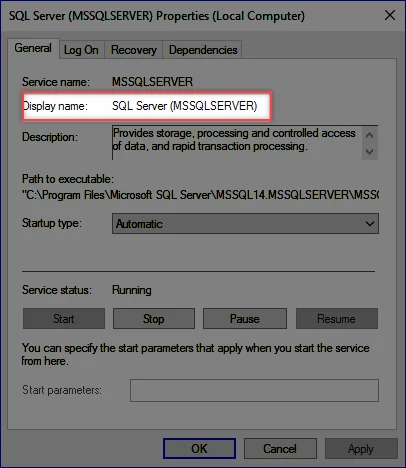Scripts
Available scripts
The following scripts are supplied and can be directly used. In all scripts, a password is firstly selected in the upper section. This is not the password that will be reset on the target system. Instead, a user should be entered here that can complete the rest of the process on the target system. This password thus requires administrative rights to the target system.
A delay can also be configured in every script. This may be necessary, for example, if a password is changed in AD and it is firstly distributed to other controllers.
Active Directory Password Reset
This script is responsible for changing passwords for Active Directory users (domain users). Access to Active Directory is configured here under Hostname.
Service accounts
This script changes the access data within a service. Both the user and also the password can be changed. The host name – i.e. the target computer – and the service name are saved here.
Please note that the display name for the service needs to be used.

The access data in the associated password can be saved as follows:
Local user
[Username] [Username] .[Username] [Computer][Username]
Active Directory user
[Domain][Username]
Windows user
This script can be used to reset the passwords for local Windows users. Only the host name needs to be saved here.
Linux user
Linux users can also be reset in the same way as Windows users. It is also only necessary to enter the host name and the port here.
MSSQL user
This script resets passwords for local MSSQL users. It is only necessary to enter the MSSQL instance and the port.
The name of the MSSQL instance can be taken from the login window for the SQL Management Studio.

If a domain user is being used to log in to the SQL server, the user needs to be managed via the script Active Directory user.
Planned task
The passwords for users of Windows Task Scheduler can be changed using this script. The host name of the computer on which the task will run and the name of the task itself are entered.
User-defined scripts
Individual solutions using your own scripts
If your requirements cannot be met using the Scripts, it is also possible to create your own Powershell scripts. These scripts need to meet certain requirements to be used in Netwrix Password Secure.
Storage location, name and call
The scripts must be saved in the following directory:
C:\ProgramData\MATESO\Password Safe and Repository Service\System\PowerShell
The scripts are saved in the format.ps1.
Structure of the scripts
The PowerShell scripts must have the following structure:
RunScript function
Netwrix Password Secure always calls the RunScript function.
function RunScript
param (
[String]$HostName,
[String]$UserName,
[String]$NewPassword,
[String]$CredentialsUserName,
[Security.SecureString]$CredentialsPassword
)
The following standard parameters can be used here:
- UserName: The user name for which the password should be changed
- Password: The password that should be reset
- CredentialsUserName: The user name of the user authorized to carry our the reset (e.g. administrator)
- CredentialsPassword: The password of the authorized user
Scriptblock
The scriptblock can be used when the script should run in the context of another user. The actual change is then carried out in the scriptblock.
It is important in this case that you provide Netwrix Password Secure with feedback about what has been changed via a Write-Output. The following example simply uses the outputs true or false. However, it is also conceivable that an error message or similar is output.
$scriptBlock = {param ($UserName, $Password)
// Make changes to SAP
if($OK) {
Write-Output "true"
} else {
Write-Output "false"
}
Naturally, CredentialsUserName and CredentialsPassword can also be directly used in the script (i.e. without the scriptblock). You can view the supplied MSSQL script as an example.
Invoke
A credential then still needs to be created. This is then transferred to the scriptblock using the invoke command. It is also important in this case to provide Netwrix Password Secure with feedback about all errors via Write-Output or throw [System.Exception].